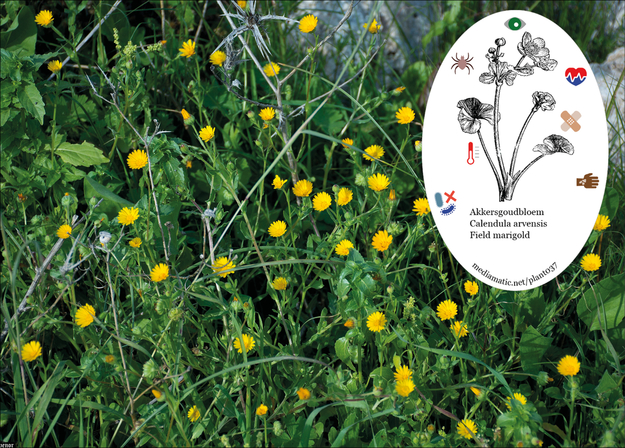The leaves are diaphoretic. The flowers are said to be antispasmodic, emmenagogue and stimulant. The plant seems to have similar therapeutic properties to pot marigold, C. officinalis. These properties are:- Pot marigold is one of the best known and versatile herbs in Western herbal medicine and is also a popular domestic remedy. It is, above all, a remedy for skin problems and is applied externally to bites and stings, sprains, wounds, sore eyes, varicose veins etc. It is also a cleansing and detoxifying herb and is taken internally in treating fevers and chronic infections. Only the common deep-orange flowered variety is considered to be of medicinal value. The whole plant, but especially the flowers and the leaves, is antiphlogistic, antiseptic, antispasmodic, aperient, astringent, cholagogue, diaphoretic, emmenagogue, skin, stimulant and vulnerary. The leaves can be used fresh or dried, they are best harvested in the morning of a fine sunny day just after the dew has dried from them[4]. The flowers are also used fresh or dried, for drying they are harvested when fully open and need to be dried quickly in the shade. A tea of the petals tones up the circulation and, taken regularly, can ease varicose veins. An application of the crushed stems to corns and warts will soon render them easily removable. The leaves, blossoms and buds are used to make a homeopathic remedy. It is used internally in order to speed the healing of wounds. Source: https://pfaf.org/
Field marigold
Calendula arvensis
Find more about this plant on Wikipedia.

With:
Seed Care